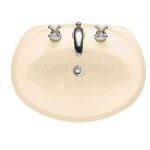Bathroom Sink Turn-Off Valve: Understanding Its Importance and Function
The bathroom sink turn-off valve, often overlooked, plays a crucial role in maintaining a functional plumbing system. This inconspicuous component allows for the control of water flow to the sink, providing a convenient means to turn the water supply on and off. Its importance extends beyond simple convenience, as the turn-off valve serves as a vital safety feature and a critical element in plumbing repairs and maintenance.
Understanding the Mechanism of a Bathroom Sink Turn-Off Valve
The bathroom sink turn-off valve is a simple, yet effective device that controls the flow of water to the sink. Typically, it is a quarter-turn valve, meaning it operates by turning the handle 90 degrees to open or close the water supply. The valve itself consists of a handle, a stem, and a seat. The stem, attached to the handle, moves within the valve body. When the handle is turned, the stem moves up or down, engaging or disengaging a seal against the seat, thereby controlling the water flow.
Bathroom sink turn-off valves can be found in various locations, depending on the plumbing setup. They are commonly positioned under the sink, where the water supply lines connect to the sink itself. In some cases, the valve may be located on the wall or within the cabinet, depending on the age and construction of the plumbing system.
Importance of the Bathroom Sink Turn-Off Valve
The bathroom sink turn-off valve serves several important functions, contributing to the overall efficiency and safety of the plumbing system.
1. Controlling Water Flow
The most basic function of the turn-off valve is to control the flow of water to the sink. By turning the handle, you can easily regulate the water supply, allowing you to adjust the water flow to your desired level. This control is essential for various tasks, such as filling a basin, brushing teeth, or washing your hands.
2. Emergency Shut-Off
The turn-off valve is a vital safety feature in the event of a plumbing emergency. If a sink faucet leaks or breaks, the valve can be quickly shut off to prevent water damage. This ability to quickly isolate the water supply is critical in minimizing water waste and preventing flooding, potentially saving you significant costs and inconvenience.
3. Facilitating Repairs and Maintenance
The turn-off valve plays a crucial role during plumbing repairs and maintenance. When working on the sink, the valve can be turned off to stop the water flow, allowing for safe and dry working conditions. Whether it is replacing a faucet, cleaning a drain, or addressing any other plumbing issue, the turn-off valve enables you to isolate the affected area and prevent unnecessary water damage.
4. Enhancing the Life of Your Plumbing System
Regular maintenance of your bathroom sink turn-off valve can help prolong the life of your plumbing system. Over time, valves can become corroded or worn, affecting their performance. By regularly checking and lubricating the valve, you can prevent leaks and ensure that it operates smoothly. This proactive approach can help reduce the risk of sudden failures and costly repairs.

How To Replace A Leaking Shutoff Valve Under Sink

Stop Plumbing Leaks With Ball Type Shutoff Valves Diy Family Handyman

Handle Broke Off On Shut Valve Under Sink Diy Plumbing Repair Bathroom

How To Turn Off The Water Under Your Sink Checkatrade

Know Types Of Shut Off Stop Valve Explained Qs Supplies

How To Find Turn On Off Your Homes Main Water Shut Valves

How To Fix A Leaking Water Supply Shut Off Valve Easy Diy For Beginners

Fix A Leaky Shutoff With Supply Valve Piggyback Diy Family Handyman

What Causes Supply Line Shut Off Valves To Fail
Emergency Water Shut Off Celina Tx Life Connected
Related Posts







